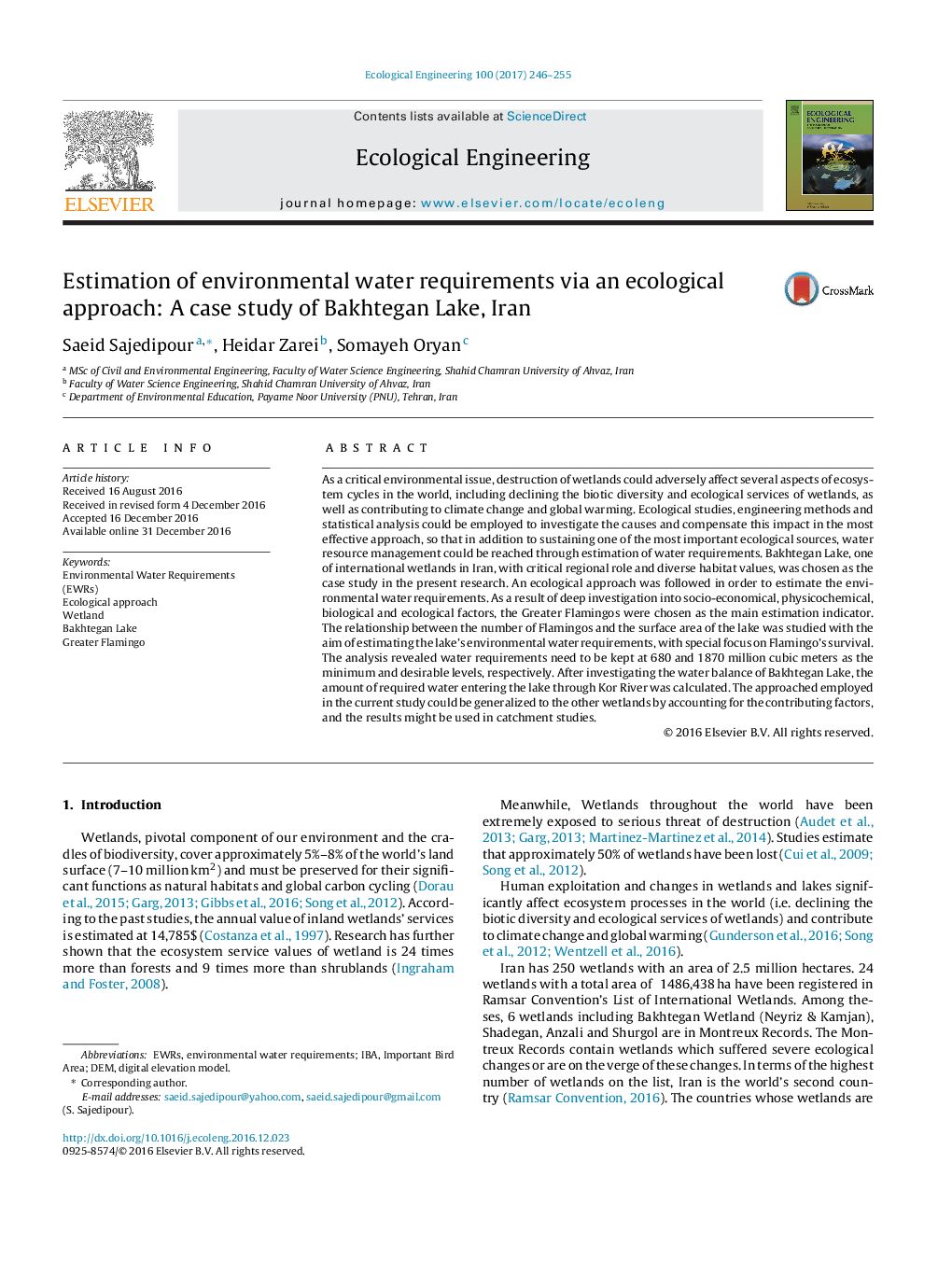| Article ID | Journal | Published Year | Pages | File Type |
|---|---|---|---|---|
| 5743726 | Ecological Engineering | 2017 | 10 Pages |
â¢Allocation of EWRs is the most effective manner in order to protect wetlands.â¢Ecological approach was used to estimation of EWRs of Bakhtegan Lake.â¢Greater Flamingo was selected as the main indicator for estimation EWRs.â¢Bakhtegan Lake needs at least 680 million cubic meters to survive.â¢The results can be used in Bakhtegan catchment water resources management.
As a critical environmental issue, destruction of wetlands could adversely affect several aspects of ecosystem cycles in the world, including declining the biotic diversity and ecological services of wetlands, as well as contributing to climate change and global warming. Ecological studies, engineering methods and statistical analysis could be employed to investigate the causes and compensate this impact in the most effective approach, so that in addition to sustaining one of the most important ecological sources, water resource management could be reached through estimation of water requirements. Bakhtegan Lake, one of international wetlands in Iran, with critical regional role and diverse habitat values, was chosen as the case study in the present research. An ecological approach was followed in order to estimate the environmental water requirements. As a result of deep investigation into socio-economical, physicochemical, biological and ecological factors, the Greater Flamingos were chosen as the main estimation indicator. The relationship between the number of Flamingos and the surface area of the lake was studied with the aim of estimating the lake's environmental water requirements, with special focus on Flamingo's survival. The analysis revealed water requirements need to be kept at 680 and 1870 million cubic meters as the minimum and desirable levels, respectively. After investigating the water balance of Bakhtegan Lake, the amount of required water entering the lake through Kor River was calculated. The approached employed in the current study could be generalized to the other wetlands by accounting for the contributing factors, and the results might be used in catchment studies.
